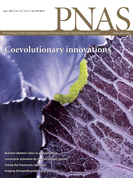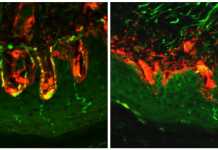Scientists have identified a key mechanism in neuropathic pain. This discovery could benefit millions of people with chronic pain from trauma, diabetes, shingles, multiple sclerosis or other conditions that cause nerve damage.

A biological process called endoplasmic reticulum stress, or ER stress, is the significant driver of neuropathic pain, said lead researchers Bora Inceoglu of the UC Davis Department of Entomology and Nematology and UC Davis Comprehensive Cancer Center, and Ahmed Bettaieb, Department of Nutrition. The work was published July 6 in the journal Proceedings of the National Academy of Sciences.
“This is a fundamental discovery that opens new ways to control chronic pain,” said co-author Bruce Hammock, distinguished professor at the UC Davis Department of Entomology and Nematology and the UC Davis Comprehensive Cancer Center.
“We can now specifically search for agents to control ER stress and its downstream pathways,” Hammock said. “This search is already underway in a number of laboratories working on cancer and other diseases.”
Continue Reading Below ↓↓↓
Working with Professor Fawaz Haj of the UC Davis nutrition department, Bettaieb found that key molecular signatures associated with diabetes and diabetic pain were linked to ER stress. Neuropathic pain is a common consequence of both Type 1 and Type 2 diabetes, affecting up to 70 percent of patients.
Inceoglu, working in Hammock’s laboratory, showed that neuropathic pain could be initiated by compounds that cause ER stress and reversed by agents that block it.
The researchers had previously shown that a class of natural bioactive lipids has powerful analgesic effects in the body. These analgesic lipids are broken down in the body by an enzyme, soluble epoxide hydrolase. The team was able to show that blocking soluble epoxide hydrolase blocks ER stress and associated neuropathic pain.
The work sheds new light onto at least one biological process that mediates neuropathic pain, Inceoglu said. With this knowledge, researchers can now test ER-stress blocking drugs in the clinic, and carry out fundamental research on how different types of pain grouped under the name “neuropathic” differ from each other and respond to new drugs.
The study provides convincing evidence for a novel concept as to what causes neuropathic pain said John Imig, professor of pharmacology and toxicology at the Medical College of Wisconsin, Milwaukee, who was not involved in the study. The work provides new opportunities for drugs or drug combinations to treat chronic pain, he said.
Additional authors on the paper are Kin Sing Stephen Lee and Carlos Trindade da Silva, both at the UC Davis Department of Entomology and Nematology and the UC Davis Comprehensive Cancer Center.
The research was supported by grants from the National Institute of Environmental Health Sciences and NIEHS Superfund Basic Research Program grant, National Institutes of Health, and the National Institute of Arthritis and Musculoskeletal and Skin Disease.
Source: University of California – Davis










